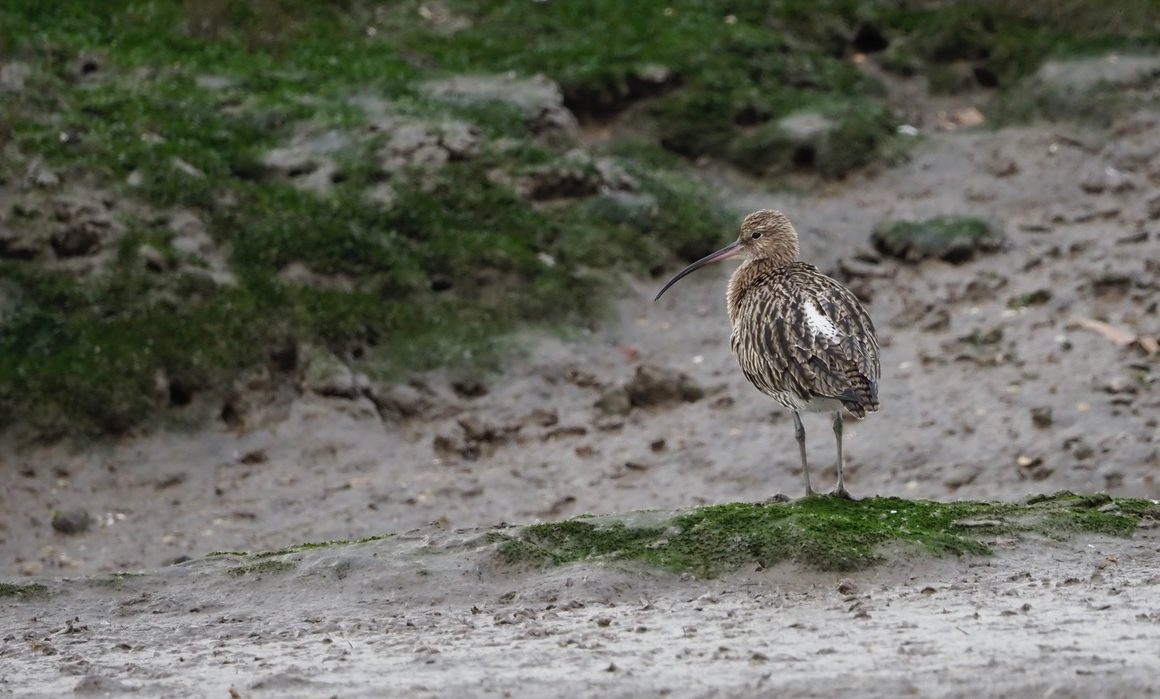
Curlews are birds of serious conservation concern in the UK, with numbers falling sharply this century. As usual, there are a number of reasons for this, ranging from loss of habitat and disturbance to unsustainable levels of predation. Curlews are long-lived birds, so their decline is not always apparent, with pairs returning annually to their favoured nesting area, despite not having fledged any chicks for years.
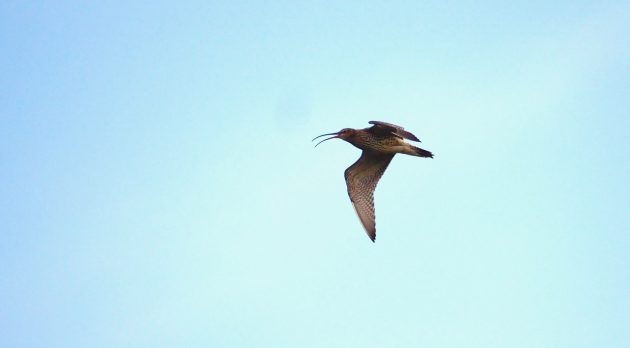
Here in the Brecks – an area of poor, sandy soils on the borders of Norfolk and Suffolk – we have a small but important breeding population. Colonisation of the Brecks started in 1947, and by the early 1950s a stable population of around 12 pairs had become established. They favour the old heaths, but a number of pairs also breed on farmland.
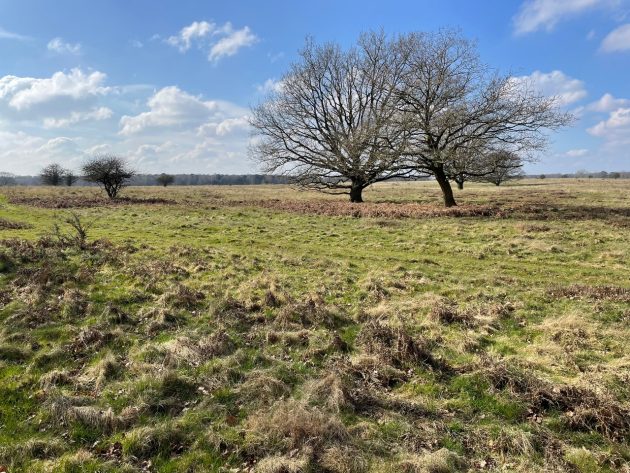
Brettenham Heath National Nature Reserve holds the highest density of nesting Curlews in the Brecks. It is surrounded by a Fox-proof fence
No one seems quite sure how many pairs there are today, but my guess would be between 20 and 30. One of the reasons they do well here is predator control, for Foxes are quite strictly controlled by gamekeepers and landowners in the area. Research by the Game and Wildlife Conservation Trust has shown that predation by Foxes (of both eggs and chicks) is one of the most serious factors limiting the success of nesting Curlews.
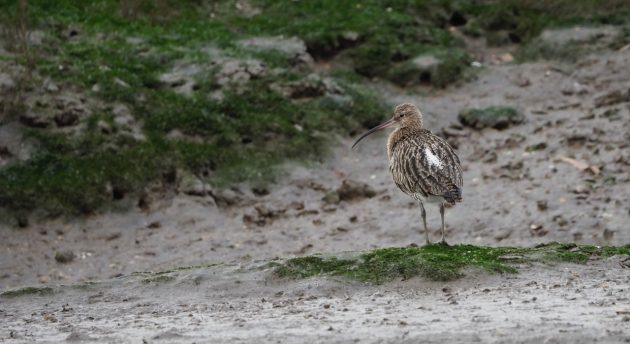
The return of the Curlews to the nesting heaths is one of the first signs of spring, for the birds start to move back from their wintering grounds on the coast at the end of February. At the start of this month I checked out Brettenham Heath National Nature Reserve, an extensive heathland reserve a few miles north of my home, and was delighted to both see and hear my first inland Curlew of the year. The wonderful bubbling song of the Curlew is one of the most beautiful of all bird songs, and is one of the reasons why many people care so passionately about this bird.
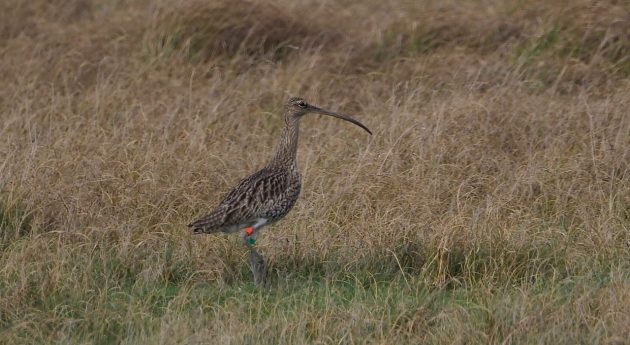
Yellow IM, the colour-ringed Curlew, on Thetford Heath, March 2024. She was ringed on the Dyfi Estuary in West Wales in 2021
This month I’ve since seen Curlews on two other local heaths: Knettishall (just two miles from home) and Thetford Heath (ten miles away). I managed to photograph the bird on Thetford Heath, an obvious female with her very long beak. (Males have noticeably shorter beaks.) What I didn’t notice until I downloaded my photographs (above and below) was the fact that she had been colour ringed, with a red ring on her right leg, and green ring above yellow on her left leg. A quick check on the internet revealed that there was an on-going colour ringing project taking place in Wales, and it seemed most likely that this was where my bird had been ringed.
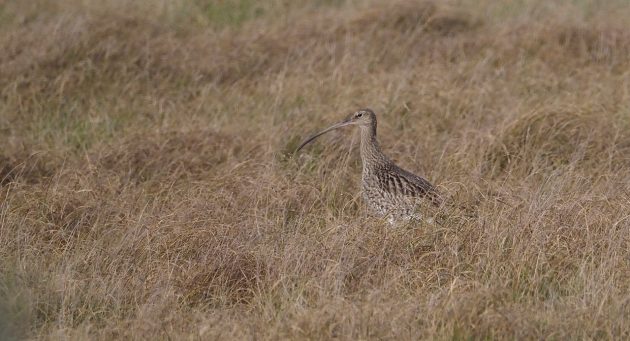
Yellow IM in the long grass, her rings no longer visible. Her long beak indicates that she is a female
An email to Tony Cross of the Mid Wales Ringing Group brought a speedy reply. Yes, he confirmed, it was one of his birds, but could I read the digits on the bird’s yellow ring? This proved to be a struggle, as the bird was quite distant when I photographed her, and I only had a couple of poor shots showing the rings. She had then walked into long grass where her legs weren’t visible.
We eventually worked out that her ring was Yellow 1M, revealing that she had been ringed at the RSPB’s Ynys-hir Reserve on the Dyfi Estuary in West Wales in October 2021. (That’s 250 miles from where I photographed her.) The following May she was found on a nest with four eggs at RAF Honnington (four miles from my home) by Harry Ewing, an ecologist with Natural England. The heath where I photographed her is just a short flight away from Honnington. Though Honnington is a Royal Airforce base with an extensive air field, no flying takes place there anymore, so nesting curlews aren’t a threat to military aircraft, as they are on other RAF bases in East Anglia.
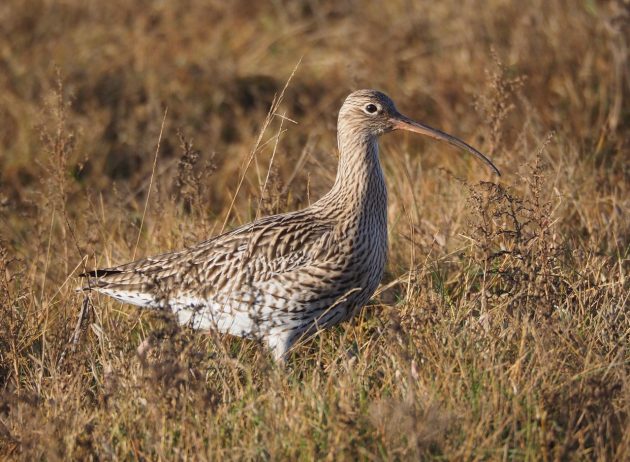
Tony told me that “the colour-ringing is part of a project aiming to study the breeding areas, winter destinations and survival rates of Curlews breeding and wintering in Shropshire/Mid Wales. In the last eight years nearly 700 Curlews have been individually colour-marked with re-sightings in Cornwall, Devon, Norfolk, Pembrokeshire, Cardiganshire, Shropshire, Denbighshire, Carnarfonshire, Cheshire, Lancashire, Cumbria and Lanarkshire as well as Counties Cork, Galway, Waterford, Wicklow and Wexford in the Republic of Ireland, Jersey, France, Spain, Sweden and Finland. Over 150 headstarted Curlew chicks have also been colour-ringed as it is vital to assess the return rates and survival of these captive-reared individuals too.”
The day before I photographed Yellow 1M I’d read a fascinating article in the weekly magazine Shooting Times, written by Liam Bell, head gamekeeper on a family-owned estate in South Shropshire, not far from the Welsh border. His piece started with the bold statement “Our curlew are back. If there is another bird to which landowners and land managers attach such ownership, I haven’t heard of it. It is always ‘our curlews are back’ not ‘the curlew are back’. Always ours.”
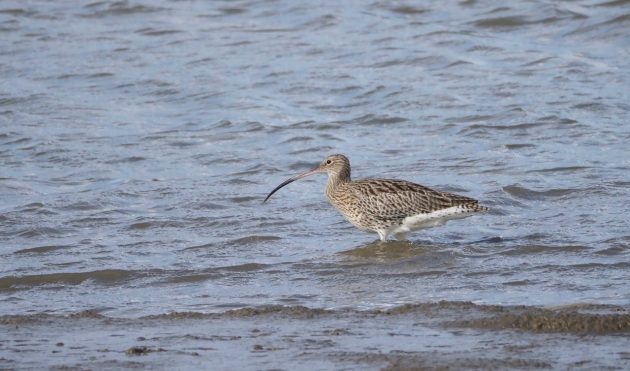
He went on to write that “Time was when every farm in the dale had nesting curlew, but they have slowly disappeared. Or, to be correct, have almost disappeared, but now thankfully have started to make a bit of a comeback. The increases on my patch are small, but locally significant and due to several things: the way the man who farms the ground manages his stock and his haylage fields; our putting up electric fences around nesting sites to keep foxes, badgers, dogs and, dare I say it, people at bay; and the hard work put in by the keepers on the estate to reduce the risk of predation of the eggs and chicks by carrion crows and foxes.”
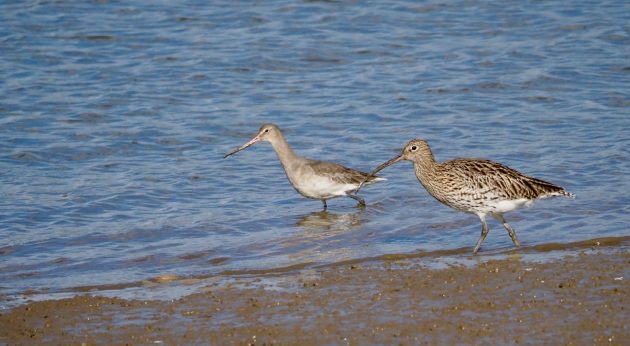
A Curlew accompanied by a Black-tailed Godwit on the estuary of the River Alde on the Suffolk coast
Predator control is a controversial subject, but there’s no doubt that without it, our populations of ground-nesting birds like Curlews and Lapwings will continue to decline. It’s also the reason why ground-nesting waders, such as Curlew and Golden Plover, breed much more successfully on keepered Grouse moors than they do on adjoining unkeepered land. It’s a fact that opponents of Grouse shooting (and there are many of them) typically ignore.
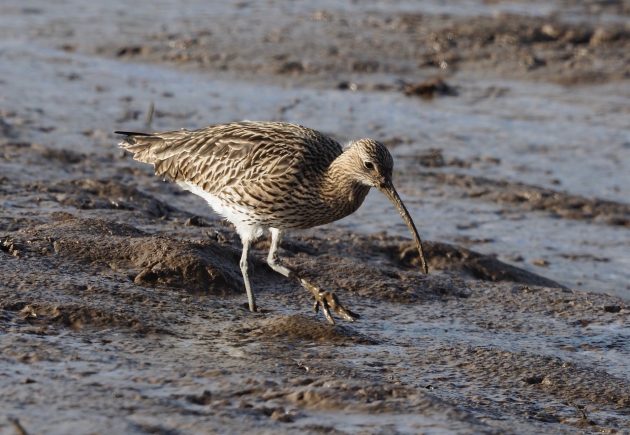
I will be keeping an eye open for Yellow IM this spring. The chances are that she will return to Honnington to breed (Curlews are very site faithful), so let’s hope that she manages to nest successfully.













Carrion Crows have, like foxes, a bad rep. It may be anecdotal but I noticed crows only in intensive farmland. Here in Portugal they are rare. That tells me there’s an underlying cause for the predation. Dare I say it: people?
A fascinating read, thank you.
Predator control, as emotive as it is, must continue if we are not to lose such special species. Like yourself, I love to hear the curlew call signalling the arrival of spring!